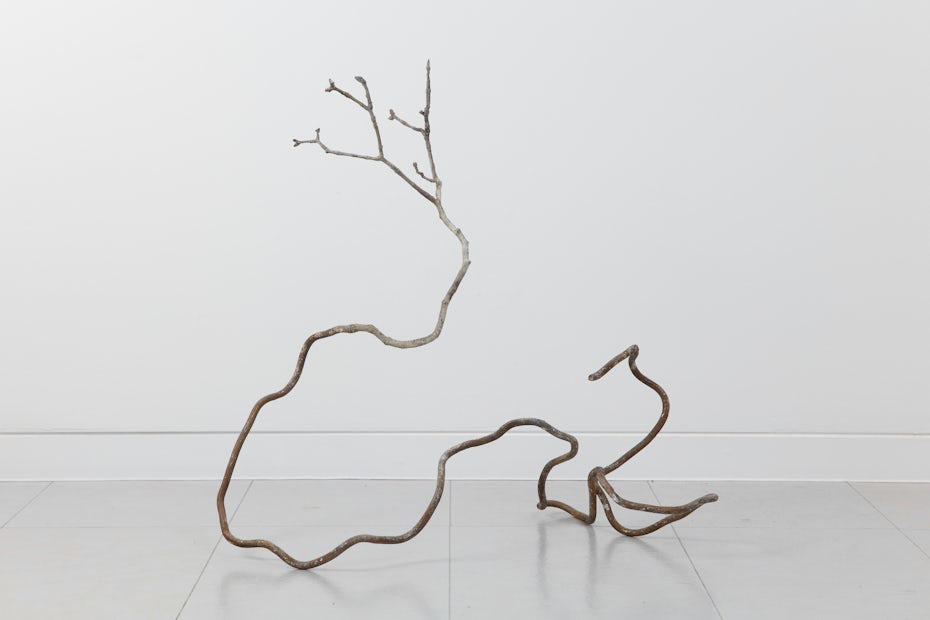Shedding Skin
Sara Bjarland
Brussels
03.11 - 21.12.2024
Works
Installation views
Press release
The poetics of rubbish
Take a utensil: its essence is expressed not in the pristine state of the object when it is new but in how it appears when it is discarded and a little worn. The truth of things is revealed in rubbish.
Roland Barthes
The universal fate of all objects is to be discarded. Never before has our planet been so obsessed with discarding things. The massive deluge of objects flooding our world casts a black shadow – the oil slick of waste. Our current era, in which the market has expanded and become global, is one of objects that are not very durable and low-quality materials. They are thrown away immediately after use, decommissioned as soon as they have served their purpose. They pile up in the domestic chaos that is our modern world. They overflow from our dustbins, fill our recycling centres, and line our motorways – wounded, faded, broken objects in a state of decay. They have lost their practical value and been stripped of their exchange value – but not their beauty or symbolic value. At least not in Sara Bjarland’s eyes. It is precisely those objects that no longer serve a purpose, those flimsy, spent materials, those truly empty things, that matter to her. At the edge of the rubbish dump and before they fall in, Bjarland grabs them by the neck and gives them – or what remains of them, their exterior or shell – an aesthetic purpose. By means of minimal, precisely chosen and targeted artistic interventions – darning, stacking, sometimes even casting – she grants them a reprieve and transforms useless objects, humble and damaged materials, and banal relics of our consumer society into works of art. Because things that are no longer good for anything can still be pleasing to our eyes.
Sara Bjarland’s works of art want to be looked at attentively – with the same keen eye that Bjarland herself used when she scanned the street trash for its aesthetic potential and reserves of meaning. From beneath the dirt and decay, the objects send a signal to the artist, so to speak. When she manipulates or transforms their material or takes minute actions to present them in space, she causes subtle shifts in our gaze and, thus, in our thinking. By rehabilitating these discarded objects, her works of art restore value and dignity to that which no longer has value in our consumer society. Sara Bjarland does not seek to show us new things; she does better than that. She helps us see things differently, the most banal things we encounter every day and have become blind to. By influencing our gaze, her pieces revise our view of things in barely perceptible ways. They change the way we see the world. This is precisely what we should expect from art: that it prioritises the creation of a new way of seeing.
Like so many other fields of production and consumption, the field of art is currently overwhelmed by an abundance of materials, expensive technological devices and pseudo-innovative designs. Sara Bjarland’s pieces, on the other hand, are created from almost nothing. Their formal simplicity, their tangible shabbiness, lends added meaning and beauty to their fragile presence amidst the bling of this world.
François de Coninck
Sara Bjarland (°1981 Helsinki) is a Finnish-born artist based in Amsterdam since 2007.
She graduated from the Slade School of Fine Art in London and in 2012-2013 she was a participant at HISK (Higher Institute for Fine Arts) in Ghent.
Her work has been shown in several countries across Europe, and recent exhibitions include Pergola at Galerie M29, Cologne, Germany (2024); Cultiver, Sculpter, Végeter at Botanique, Brussels, Belgium (2024); Paltz Biënnale, Soest, Netherlands (2024); Craft!Now at CODA Museum, Apeldoorn, Netherlands (2023); Trance, at Tallinn Art Hall, Estonia (2023).
In 2024 she was commissioned to make a public, permanent sculpture as part of the Beaufort Triennial, curated by Els Wuyts. The work, Monobloc Moments, is situated in De Haan/Wenduine, Belgium.
Bjarland’s work is part of several public and private collections, including the Kiasma Museum for Contemporary Art (Helsinki), The Jenny and Antti Wihuri Foundation (Helsinki), Museum de Fundatie (Zwolle), Artis collection (Amsterdam); Thomas Kuhmann collection (Hamburg) and Frédéric de Goldschmidt collection (Brussels).






























